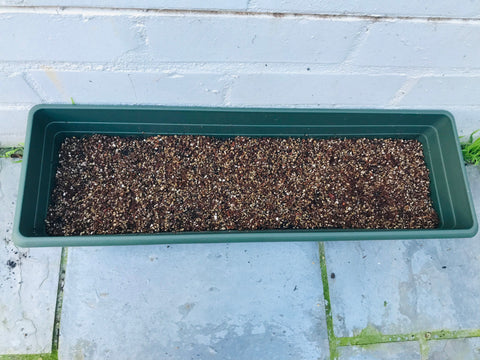Magic Germination Mix Trials
We set out to make the perfect germination mix. Here are the results of our successful basil seed trials.

Making every seed count
The purpose of this trial was to achieve a high germination rate. We wanted a formula that could make every seed count as we believe in a no-waste philosophy.
Every type of seed itself has its own germination rate and if you've bought from a good supplier, they should have their germination rate written on the packet. For this trial, we used organic basil seeds that had a 96% germination rate according to our supplier.
This trial uses the vegan version of the Magic Germination Mix. Our vegan version is 100% natural, cruelty-free and chemical-free.

Germination mix vs Seed-raising mix
The best germination mix is always a lightweight, fine blend that is able to create a moist environment for seeds to sprout.
Lightweight and fine - This allows the tiny stems and leaves to easily push up through the soil to the light, and the delicate roots to easily push down into the soil.
Moist - Seeds need water to signal it to start growing, otherwise it will stay dormant.
A germination mix is different to a seed-raising mix as usually it has less nutrients in it and suits seed growth up to approximately 2 sets of leaves (at which point you can transplant into the ground, or add fertiliser in the existing pot), whereas a seed-raising mix allows you to raise the seedling to a substantial height since it already incorporates fertiliser.
However, a seed-raising mix is usually denser and harder for seeds to actually germinate.
So if we are planting in a trough, our preference is to use a germination mix as the top layer in-between the seed, and use normal soil as the bottom layer.
This allows the seeds to have a high germination rate, and access a nutrient rich soil for strong growth after it has established.

Method
1. Layer 1 - We filled up our trough planter 2/3 with normal soil.
Layer 2 - Then, we put 3cm of our Magic Germination Mix on top.

2. We used a divider so we could grow dill, mizuna and basil. We put in dill seeds on the left, mizuna seeds in the middle and basil seeds on the right.
Seeds - Then, we planted the seeds.
Seeds should be planted quite shallow - the rule is about twice the width of the seed.
Layer 3 - We put approximately 1cm of our Magic Germination Mix on top of the mizuna and basil seeds.
We put Osmocote Seed & Cutting mix (from Bunnings) on the dill (left), just to show our theory that seedling mixes are usually too dense leading to a low germination rate.
Basil was a bit slow to sprout, but both mizuna and dill came up.
As we thought, the dill seeds in the Bunnings Osmocote mix wasn't able to push through the soil to the light as well as our Magic Germination Mix. However, we note that we didn't count the dill / mizuna seeds (we simply sprinkled both generously) since the purpose of the trial was to focus on the Magic Germination Mix rather than compare our mix to the Bunnings one.

3. For the record, we planted 30 basil seeds.
We kept them indoors for germination, right next to our north-facing window. The basil finally sprouted!

We got a high germination rate of 25 / 30 basil seeds. Success!
Since achieving the supplier's germination rate (28/30 basil sprouts) is actually really difficult at home (their trials are often conducted in proper conditions measuring humidity etc), we consider 25/30 basil sprouts is a seriously good result for your average gardener trying to start seeds at home.If you want to give your seeds the best start in life or are looking for a vegan germination mix, give our Magic Germination Mix a go and always feel free to reach out if you have any plant questions!
